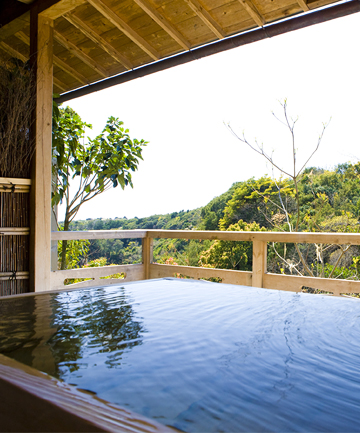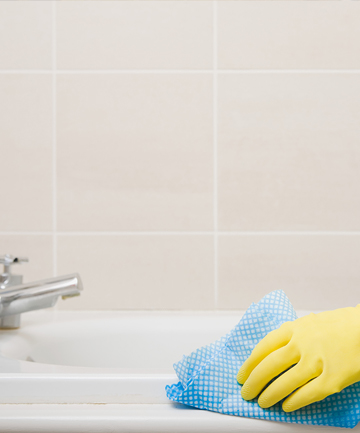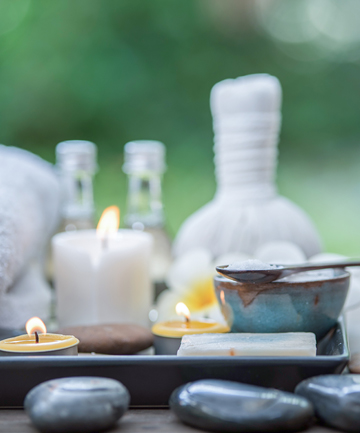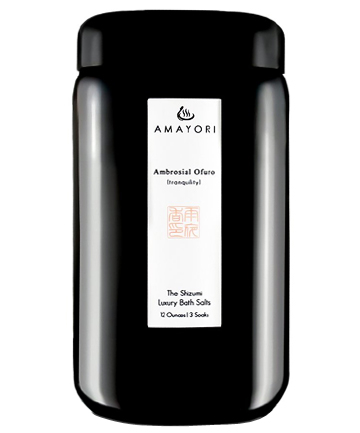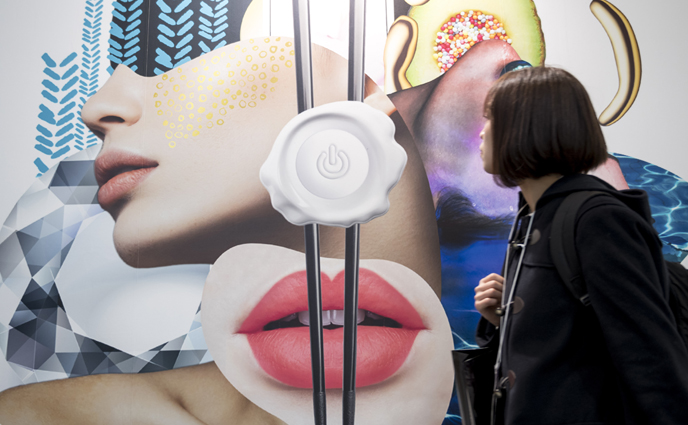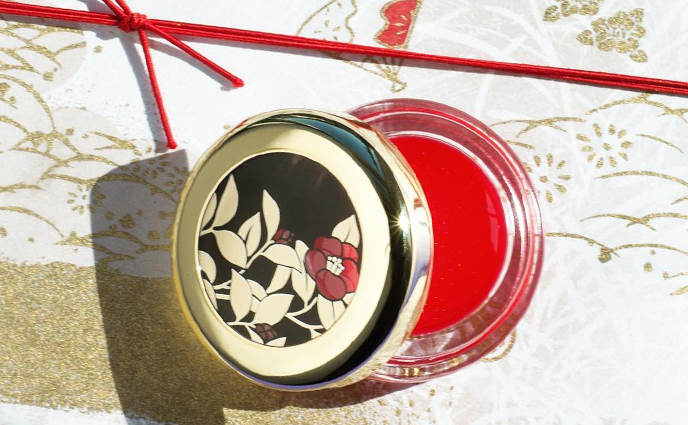Before visiting Japan over the summer (where I learned quite a few beauty lessons), I hadn't realized just how integral bathing was to Japanese culture. While traveling across the country, I was amazed at how deep the bathtubs were everywhere I stayed. As a lifelong New Yorker, I've grown accustomed to only having access to tiny shallow bathtubs, or sometimes just a shower, so this felt like a real luxury to me. I took advantage of that by taking a nightly bath, which was a great way to decompress after long days full of sightseeing in extremely humid, 90-degree weather.
"In Japanese culture, taking a bath is an important and much-loved daily ritual, seen as a way to unwind and relax at the end of a long, stressful day," explains Tokyo-based blogger Alisa Kerr, founder of Tokyo Beauty Book. Kerr notes that there is an important separation between showering and bathing. Showering is all about cleaning your body, washing your hair, and completing any other grooming tasks (like shaving). "When you are completely clean, you then move to the bath and take a long soak in a hot, deep bath," says Kerr. "Soaking in a warm bath is believed to have many health benefits, including relieving muscle pain, improving circulation, raising the metabolism, and giving the skin a dewy glow."
Four years ago, Françoise Decatrel started a line of Japanese-inspired bath and body care products, Amayori, after traveling to Japan and visiting a traditional onsen (a hot spring bath) in Kyoto. "It was so simple, beautiful, and calm," she remembers. "I didn't want to leave that behind." So when she got back home to the United States, she started taking baths every week. "I found that the only time I was really away from my phone was when I was in the bath," she says. That became the catalyst for her to leave her high-stress job in real estate and focus on launching her own line of products centered around an activity many of us don't think we have time for: bathing.
Luckily, you can reap the benefits of Japanese bathing without booking a trip across the world. "There are no real rules or equipment needed to take a Japanese bath — it's very individual," says Kerr. "The most important thing is to take as much time as possible — this is not to be rushed. A Japan-style bath is daily self-care ritual that almost everyone can enjoy at home." That being said, there are certain steps you can take to make your bathroom feel more like an oasis away from the busy world. Keep reading for some of our top tips on how to recreate the experience of a Japanese bath, in the comfort of your own home.
Image via t_kimura/Getty Images
The first step to recreating a Japanese-style bath at home is to clean your tub and to tidy up your space because you want your environment to be as relaxing as possible. As Decatrel points out, Japanese design is all about minimalism, so stash tubes of toothpaste and bottles of shampoo away.
That being said, cleaning your bathroom isn't exactly the most soothing activity (in fact, it's a serious arm workout, if you ask me), but you can make things easier on yourself so that it isn't too stressful. Decatrel multitasks: She'll spritz cleaner into her tub while she's brushing her teeth, for example, and then she'll just wipe her tub before she's ready to take a bath.
Image via Image Source/Getty Images
One easy way to make your bathroom seem as Japanese as possible is to add some natural elements, like stones, says Decatrel — you can easily pick these up for cheap at Home Depot, then just place them along the age of your tub. The right bath mat will also transform your tub. "A bamboo bath mat changes everything instantly," says Decatrel. Finally, add an unscented white candle to your bathroom. "This ties into the Japanese aesthetic," says Decatrel. While you should steer clear of checking Facebook or Instagram while you're in the tub, feel free to play some calming music. Decratel herself actually puts together playlists for customers so that they can more easily immerse themselves in the Japanese bath experience.
Image via boonchai wedmakawand/Getty Images
"There's a long standing Japanese tradition of choosing bath salts for your bath according to your daily condition," says Kerr. "Japanese drugstore and beauty stores have huge selections of bath additives — bath salts, oils, milks, and even clay powders — to add to the bath to suit your mood, muscle aches and pains, skin complaints, and of course to detoxify and condition the skin." Decatrel's line, Amayori, revloves around three fragrance types for the bath: Ambrosial Ofuro (tranquility), Hinoki Onsen (deep, meditative relaxation), and Rotenburo Air (rejuvenation).
"I love the ritual of heading to the shower, getting clean, washing my hair — most Japanese men and women wash their hair every night — and slipping into the bath for soak wearing a face mask and/or deep hair treatment," adds Kerr. "Usually Japanese apartment bathrooms have a shower separate to the bath, but in the same room, so that you can run the bath and have it ready for when you finish you shower," says Kerr. While you may not find yourself with the same set up, you can still fill your tub while you're eating dinner or doing another task so that it's ready when you are.
While how you set up your bath is up to you (you can use the previous tips as a guideline), there is one rule you should stick to: bathe at night. "Perhaps the most important thing to do is have you bath at night," says Kerr. "The Japanese bath ritual at the end of the day is the perfect way to end the day and prepare yourself for a good night's sleep. Slipping into bed clean, warmed to the core and relaxed is the perfect precursor to a deep, restful sleep."
Image via Paul Bradbury/Caiaimage/Getty Images


